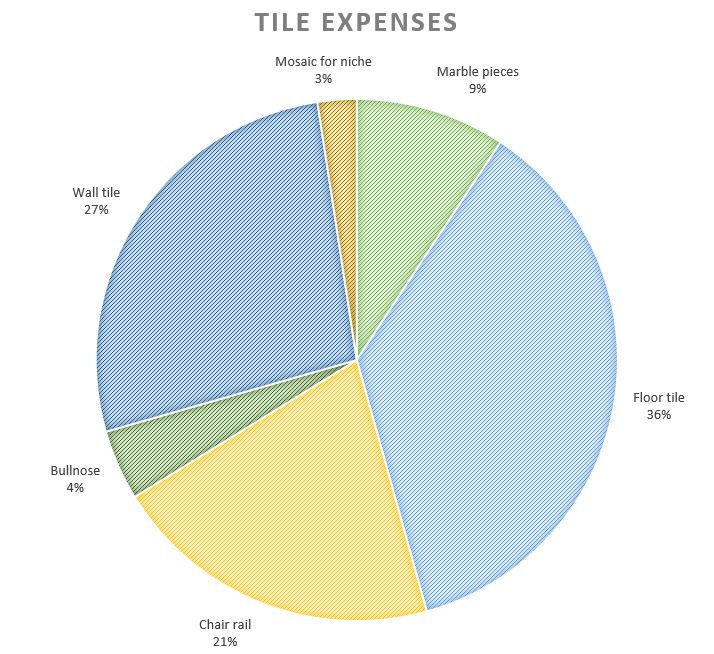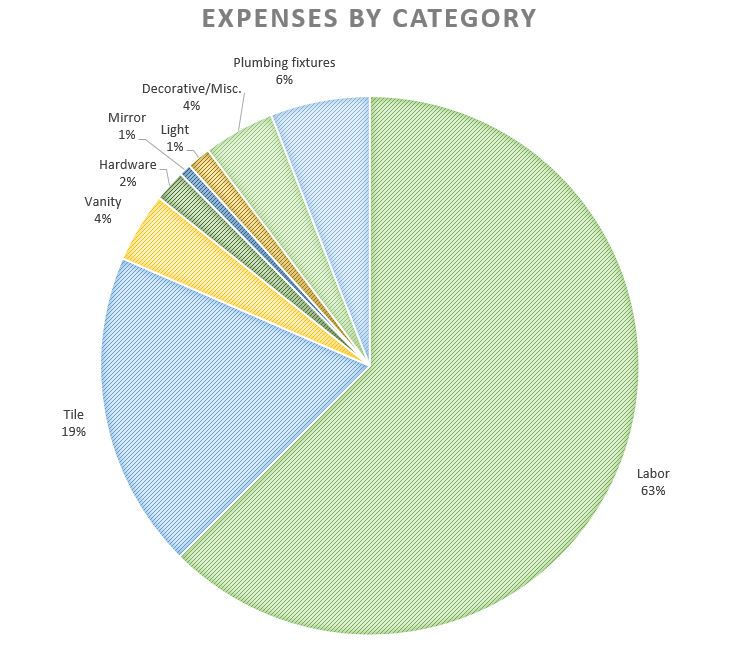5 Tips for Renovating a Bathroom on a Budget
- Molly
- Aug 2, 2018
- 4 min read
Updated: Apr 4, 2020

When we decided to tackle the bathroom project, we not only wanted to bid farewell to cracked tile -- which actually wounded me on more than one occasion -- we also sought a space that looked great. And it turns out, great looking bathrooms don't come cheap.
Fortunately, I like a challenge, especially when it comes to being thrifty. One reason we gave the project the green light was because I thought I could get it done around $5,000. Yes, that's a lot of money. But it was less than some other things on our wish list, like new windows, and it's actually inexpensive for a bathroom.
Let's keep in touch! Sign up to get updates directly to your inbox! Subscribe
The 2018 national average for a bathroom renovation is $9,789, according to Home Advisor. The average spend in the DC metro area is actually $1,000 more than that figure, with a typical range of $6,409 to $15,305.
While we didn't come in at $5000 as I had hoped, we were pretty darn close and well below the average in our area. The full peek behind the (shower) curtain is provided at the bottom of this post with an itemized list of expenses.

Here are some tips for scrimping your way through a bathroom reno.
1. Find something worth saving
Figure out what you can keep from your current bathroom. In our case, we really wanted to save the bathtub. To be honest, I never even priced out bathtubs because the idea of getting that 1950s hoss down the stairs and out of our house was so terrifying. I figured it would either kill us or significantly increase our labor cost to pay someone to haul it away. It was also in good shape so we did everything we could to keep it.
What else could stay put? The location of all the pipes! Moving pipes or re-configuring a bathroom layout immediately raises the price.
2. Think inside the (big) box -- for materials
It goes without saying that natural stone and hand glazed tiles are gorgeous, but there are some really beautiful and classic materials at big box stores and home websites that can also be mixed in unexpected ways for a bigger impact. Another advantage to sourcing materials from these stores is that they readily accept returns, allowing you to recoup some costs from unused tile.
It's also worth noting that, even with inexpensive tile, the more ornate pieces cost a lot more. If you're looking to trim costs, you can use these sparingly.

We got the marble for the threshold and niche for a song, but they were just two pieces and pricey compared to the other tile. Most notable was the price of the chair rail pieces. We only used these to cap the subway tile halfway up the wall. It's a great look but at almost $8 per piece, it's a substantial jump from subway tile on the walls, which was only $2.37 per square foot.
3. Think outside the box -- for labor
Get creative around labor, because it will likely be you largest expense. Plan this part wisely. Given we were just looking for a plumber to help with the shower rough-in/valves and someone to demo and install the tile, we didn't need to use a full-service construction company.

We were very lucky to have a friend in that field. Because our schedule for the project was flexible, he was able to recommend the foreman of a reliable tile contractor to take on our work over evenings and weekends in a 2-week period.
Just like that sign you see at almost every car mechanic's ("Pick two: Good, Cheap, Fast") you have to give somewhere. In our case, we had other bathrooms and were totally fine with the tile work taking a while. If you have flexibility on time, you can get quality work done for cheap.
Conversely, we likely overpaid on our plumbing work because we had an extremely tight window for the work to be done. We ended up going with a fairly expensive plumber who could come out within 24 hours of our call. I would have preferred to get multiple quotes and take our time but it would have held up our tiler. So, in that case we picked good and fast, and it wasn't cheap. Keep sequence in mind and plan out when people will be working.
4. Roll up your sleeves
We handled the drywall patching, painting, electrical, toilet and sink installation, hardware mounting, caulking, constructing the window treatment and some of the initial demolition. Take a look at the project and figure out what you can do yourself and what you can leave to the pros. By the power of grayskull our Wiring 1-2-3 book and countless YouTube videos we've impressed even ourselves.
5. Embrace the sketchy
It's okay to be a little sketchy. In fact, I embrace the sketch. I'm that lady sorting through receipts at Home Depot customer service for an ungodly amount of return transactions. (Sorry if you've been in line behind me.) I'll also go that extra mile to sell an old bathroom mirror on Craigslist even if it gets me less than $20.
For this project, I found myself texting a kind neighbor who had a dumpster in her driveway and asking if we could throw some tile debris in there before it was hauled off. Why would I pay to take stuff to the dump if that's an option? We got more than a few slow drive-bys while we were throwing stuff from our truck to the dumpster. No shame in my trash flinging game.
In the end, we came in at $5,612.
We feel like we got a lot of bang for our buck on this project and learned a lot.


Comments